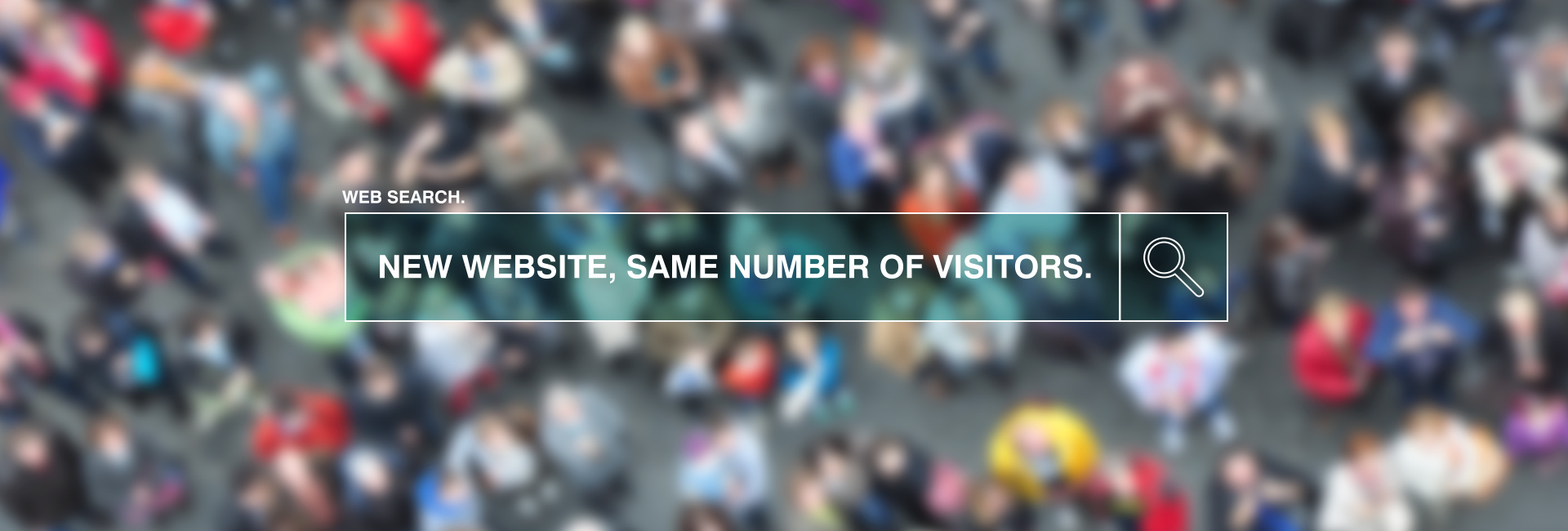Everyone knows how critical it is to have a beautifully designed, functional, website that portrays a clear message about what you do and who you are. Depending on your industry and the demographics of your customer base, a website may be their first – or even only – contact with you: it’s important to make a lasting impression that counts.
But it’s also true that the online world moves fast – what was “hot” a year or two ago might be decidedly “not” now. That’s why businesses that are serious about their online presence hire professional agencies to “refresh” their websites on a semi-regular basis. At Kiss Design, we’re frequently contracted to provide this service, meaning that we have an inside track on the things that businesses worry about when they’re having a new website built. One thing stands out: will I have to start the lengthy process of gaining visibility on search engines and SEO ranking from scratch?
The answer is an emphatic NO! There are a number of things you can do to ensure that you never rank lower than you should after a successful website redesign.
Effective Oversight
Don’t leave anything to chance: monitor everything from the get-go to avoid discovering mistakes further down the line. That means monitoring your keyword rankings, the organic traffic you receive from search engines, the total number of backlinks that link to your site, your domain authority, your Alexa global rank, the speed of your website, your spam score, your trust flow, and your safety ranking (i.e.: guaranteeing you’re not suffering from spam, viruses and malware!)
Build it Offline
Whether you’re sprucing up the copy on an old site, or creating something entirely new on your old domain, NEVER try to make changes on your site while it’s live. Website redesign can be messy, time consuming, and involve the correction of various mistakes: the last thing you want to is to do it in full view of the world. The best bet is to build your new site on an entirely new domain, then transfer it over to your current one when complete. That way, your site is never offline, and your customers aren’t left wondering where you’ve gone.
Stick With What Works
Web users like clear customer journeys and sleek functionality. Don’t try to redesign the wheel – assuming the structure of your current website works well, build your new site around it. That way, there’s no lag time while returning clients try to figure out where you’ve hidden their favourite page.
Save Your Original Information and use 301s
You might be taking down your old website, but that doesn’t mean you should get rid of it entirely. You should create a list of all the pages on your old website and use 301 directs to make sure that search engines are aware of the new URLs on your info – otherwise, you could lose trust, search engine rankings, and organic traffic! Using 301s correctly means that your social media and links from the web still take people to the right place – and it means your customers won’t get lost looking for something that’s moved.
Don’t Be Afraid of 404s
No one likes clicking on something only to open a 404 page not found message. But that doesn’t mean you can avoid them. Good 404 pages help users and search engines to find their way back to where you want them if they get lost – and you can make them less frustrating by including your website menu and a search bar on the pages themselves.
Backlinks Matter
Backlinks are a vital part of keeping your search ranking high and can bring traffic from all over the web directly to your site. Unsurprisingly, the number one concern that people have when their website is being rebuilt is that they will lose all of these precious leads. But that doesn’t have to happen: in an ideal world, you can contact the people who supply your backlinks and ask them to change the URL – or, failing that, more judicious use of those 301 redirect pages!
Tidying Up
Once the big work is done, you’ll be left with a collection of fiddly little jobs to finish off before you’re site’s ready to go live. This includes things like optimizing images for SEO, using the right meta-descriptions, submitting the website to Google (and other search engines) and compressing images so that your site loads faster. These things might seem minor compared to what you’ve already done, but they’re unavoidable if you want your website to be a professional level piece of work.
Test, Test, Test
Once your site is live, it’s time to check that everything’s working the way it should. That means monitoring your bounce rates compared to your old website, and keeping an eye out for improvements or declines in your search engine ranking. As a tip, Google recommends keeping your old site active with 301 redirects for at least 180 days. This should make sure that traffic doesn’t slow, and your transition to a new look is as easy as it can be.
Of course, at Kiss Design, we can do all of the above for you, ensuring that you have a smooth transition to a great new website with a minimum amount of hassle. To find out more about what we can do for your website, get in touch with Emma at emma@kissdesignltd.com
